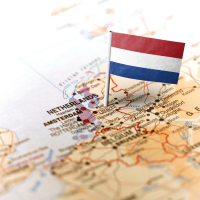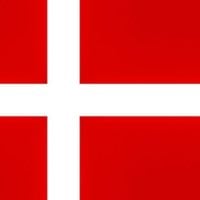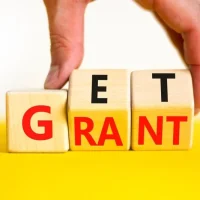The success of a NGO largely depends on the projects that it develops and implements. A project can be described as a set of activities planned to solve a particular issue in a particular locality. A project should have a well-defined scope, clear deadlines and a specific target population. A project helps in translating an idea to logical strategies. While developing a project always remember that it has the following features:
- Specific target area (Location, Sector, Beneficiaries)
- Well defined timelines
- Clear deliverables (Output, Outcome and Impact)
- Detailed Activity plan (people responsible, activity schedule)
- Fixed Budget
During the planning stage of NGO establishment, you might have identified several problems in the target community which need immediate help. You need to develop a project proposal focusing on the most critical issue.
Project Planning: Project development is the key ingredient which will largely define the success of a NGO. The projects should be developed considering both the organizations vision and the need of the community. Developing a project for a social problem requires lot of research and planning. There may be several problems in the community that your organization plans to work for, however, it would not be possible to address all the issues at once. While developing a project for a particular project, you will have to use the following steps:
- Problem Identification
- Situation analysis
- Project Design (Solution for the problem)
- Implement the project
- Evaluate the project
It is vital for the NGO to build trust in the community to ensure acceptability and effectiveness of the project. To ensure acceptance by the community, you should involve the community in the initial project development and planning stages. There are large number of tools that are participatory in nature and can be used during the project planning are:
- Stakeholder analysis: Stakeholder analysis is an important tool to understand the perspectives of the problem through diverse groups.
- Problem tree: Problem Trees are an effective tool to analyze current problem, the causes of the problem and the immediate effect of these problems. Several NGOs use this tool to develop project proposals to address the problem.
- Seasonal calendars: This is another important participatory tool to understand how the community performs its functions during various seasons. This exercise helps in understanding the periods of scarcity, illness, water stress etc.
- Focus group: Focus group discussions form an integral part of qualitative research in which a group of people are asked about their perceptions, opinions, beliefs, and attitudes towards a product, service, concept etc.
- Questionnaire: A questionnaire is a research tool containing a series of questions on a particular issue or problem.
Along with getting sufficient information about the issues and problems of the target areas, you should start looking for available funding opportunities. It is a good practice to look for donors in advance, so that you can prepare the project proposal as per the donor guidelines.
Being a new NGO you may not have a team to specifically works on the project proposal, in which case you should request your board members to help in the process. The project proposal has several sections, and the board members can divide the sections amongst them as per ther experience and skill set.
Project Proposal development
A project proposal is a formal request for financial support for implementing a project. The proposal outlines the implementation plan, the financial requirement and details about the expected outcome. The proposal should provide information on what you intend to do, what are the objectives, key activities, how will it help the cause, how much money you need etc. As there are several organizations applying for funding, you need to develop a strong case to avail the fund Make sure that the proposal has the following qualities.
Some points to be kept in mind while drafting your proposal:
- Make sure that the proposal is in line with the priorities of the funding body and within the allocated budget.
- Use simple and effective language to explain your proposal. Avoid using jargons and don’t be too verbose.
- Do not make the proposal too academic by using too much facts and figures. Use facts at only relevant places eg. Describing the issue/problem and how you intend to solve it.
- Have a human pitch to your proposal, which simply means the proposal should show that your care about the issue.
- Follow the guidelines, format and instructions properly.
- Clearly mention about the sustainability aspect of the project and your exit strategy from the project site.
- Make a detailed budget reflecting how you will be utilizing the funds.
- Ensure that your share relevant documents with the donor agency.
- Avoid making spelling and grammatical mistakes, so share the proposal with your colleagues and get it checked thoroughly before submitting.
Even though most donor agencies have their specific templates/formats for proposals, you can start writing your proposal using the following headings. The following is a sample outline for a project proposal.
- Introduction: This section briefly outlines the project proposal. You can mention the problem that you propose to address, along with a summary of the solution. You can also describe the structure of the
- Project Rationale: This section provides information of why the organization is addressing a particular problem. The rationale should answer the following questions:
- Why do you need to solve the problem?
- What are some important facts about the issue?
- How do you plan to solve the problem?
- Project description: this is the actual body of the proposal and has several sub sections. Important sections in a proposal are:
- Project Goal and Objectives
- Target Beneficiaries
- Project activities and work plan
- Implementation staff
- Project Outcome and Outputs
- Risk management
- Sustainability
- Monitoring and Evaluation
- Project budget: Details of the resources required for implementing the project.
Project management
Successful NGOs provide high quality service to the beneficiaries and ensure that their projects make a difference in the lives of the target community. With the growing coopetition amongst NGOs it is essential that you develop effective project management strategies that could enhance your visibility both amongst the beneficiaries and also the donors. This will require you to manage and operate all project activities professionally.
For most NGOs, project management relates to implementing the project activities as per the agreed terms with the donors.
Project management refers to an array of activities related to project implementation, managing the external risks, communication, resources and budget. Project managers often face complex situations during project implementation that may arise due to a number of reasons ( political, climatic, cultural etc.). it is therefore necessary to use a set of pre-defined management strategies that could be used during project management.
Following are a few advantages of using management strategies in project implementation:
- Timely completion and delivery of project outputs
- Effective implementation of project activities
- Enhanced visibility
- Reduces confusion
- Timely modification of activities in case of negative externalities
There are several tools and techniques that can be used for effective project management. Some of the commonly used tricks for project management include:
- Staff and human resources: Hiring staff for project implementation will be the first step towards project management. The Human Resource policy that you had developed will now come into use. Decide on the roles and responsibilities of the staff that will be recruited for the project. Once the staff is on board, explain them about the project and their deliverables. Remember to regularly meet them and guide them in project implementation.
- Resource management: Make sure that the funds you have received are used asper the agreement with the donors. You can hire a finance manager to manage the funds effectively. If there are any changes in the budget, inform the donor and seek their permission before making any changes in the budget. Make sure that the finance manager creates a file to update all financial transactions. Along with financial resources you will have to oversee the efficient utilization of other resources (tools, equipment, machines, books, computers etc.).
- Communication and Reporting: Communicate the project objectives with the target beneficiaries and involve them in the process of project implementation. Make sure that the project team meets the beneficiaries to take their feedback and suggestions. Also keep the donors informed the project progress on a regular basis. Send the reports as per the schedule and adhere to reporting deadlines.
- Monitoring: As the project head and the founder, you will have to monitor all project activities and ensure that the project is being implemented as per the agreement and your expectations.
Success of the organization will largely depend on the effectiveness of the projects, so make sure that all your projects are managed and implemented properly.








































